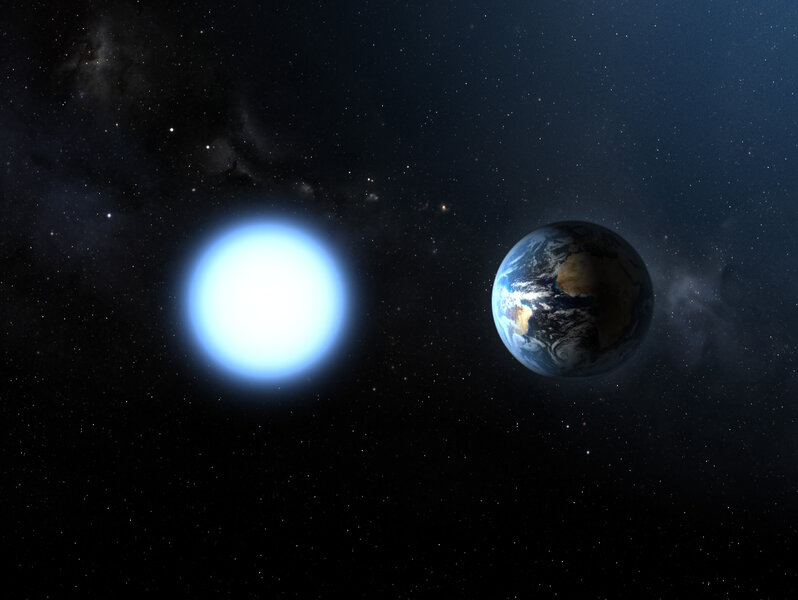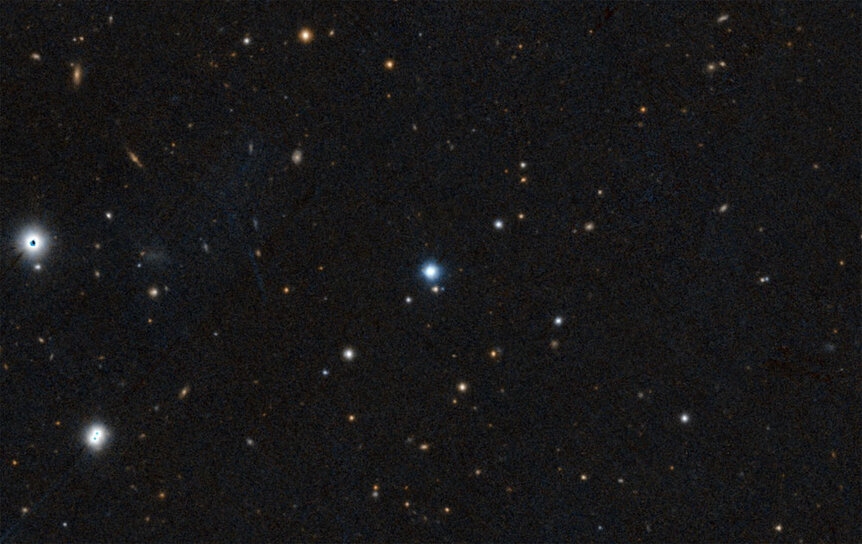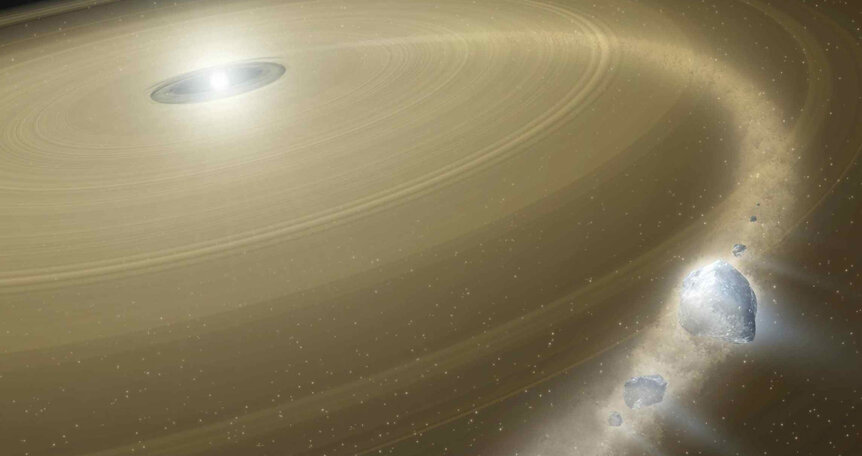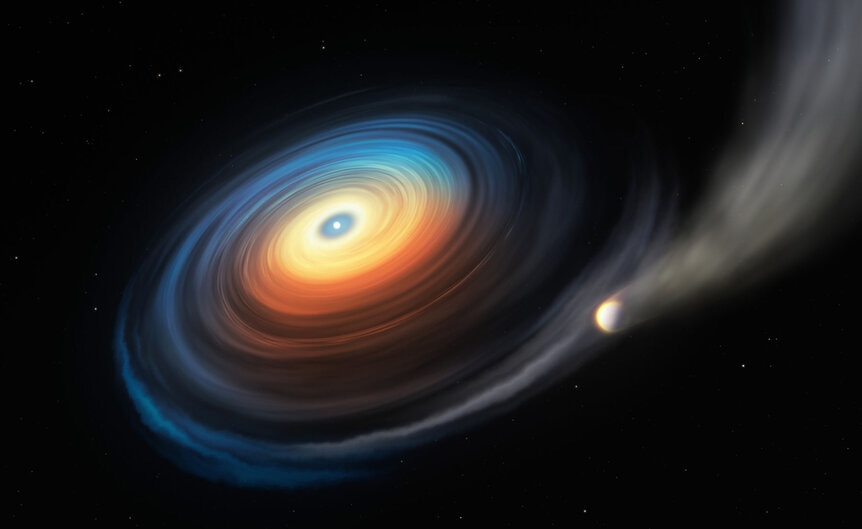Create a free profile to get unlimited access to exclusive videos, sweepstakes, and more!
Astronomers watch as a dead star eats its planets and blasts out X-rays
Sometimes the term "stellar zombie" is really pretty accurate.
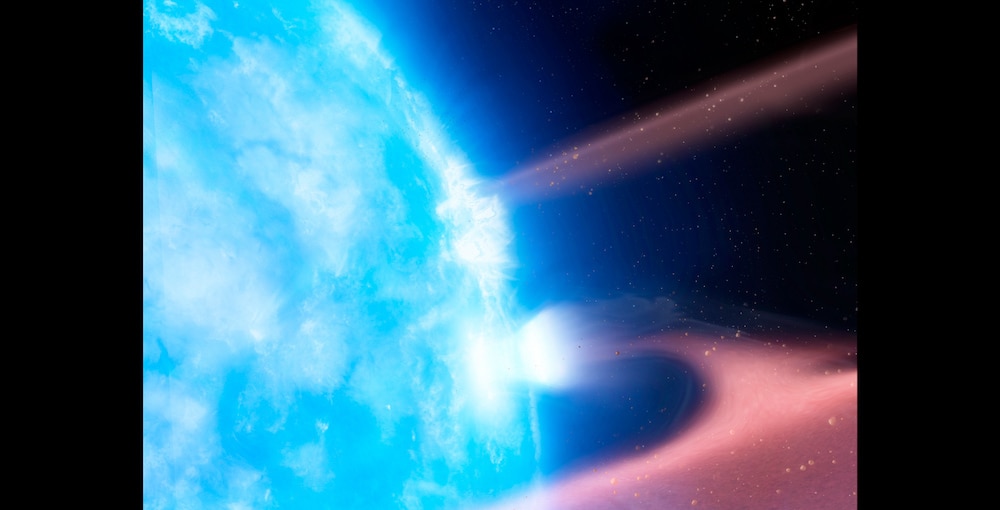
For the first time, astronomers have found direct evidence of a dead star currently eating the remains of its former planets, the debris accelerated to hellacious speeds and temperatures before slamming into the star's surface.
You might want to read that again, because wow. We've known this has been going on for a while, but until now the evidence has been indirect. The new observations have detected, metaphorically speaking, the death screams of the debris as it plunges downwards to its final destruction.
The dead star in this case is called G29-38. It's a white dwarf; the core of a star like the Sun exposed to space after the star became a red giant and expelled its outer layers. A white dwarf is small, hot, and very massive, making it extremely dense as well.
G29-38 has about 60% the mass of the Sun squeezed into a ball only 18,000 kilometers across, less than half again as big as Earth. A cubic centimeter (about the size of a six-sided die) of its material would weigh half a ton. The gravity on its surface is about 150,000 times the Earth's — I'd weigh over 11,000 tons on its surface, but I'd also be a vapor since the temperature is about 12,000°C.
The gravity on a white dwarf is so strong that any heavy elements like iron or calcium sink into its depths pretty quickly. We expect to only see hydrogen and helium there. However, with many of these stars we do see heavier elements, and over the years it's become clear that this is due to rubble, planetary debris from their previous systems of planets that were torn apart and fall down onto their surfaces. In fact one of my favorite astronomy stories is that the very first evidence we ever had of other planets outside our solar system — from 1917! — came from exactly this kind of event.
We can infer how much material is falling onto a white dwarf's surface by the abundance of these heavier elements there. But this depends heavily on theoretical modeling of how material mixes in with the weird fluid of a white dwarf, so it's indirect. So what would direct evidence look like?
X-rays.
The material is brutally accelerated by the star's gravity, and slams into the surface at something like 5 million kph. The heat generated can be millions of degrees, and this ferocious impact creates flares of energy, emitted as X-rays.
The astronomers used the orbiting Chandra X-Ray Observatory to take a long look at G29-38, staring at it for over 100,000 seconds, more than a solid day (link to paper). It saw weak X-ray emission from the star indicating the slow accretion of material onto its surface. From the brightness they estimate about 1,600 tons of disrupted planetary material is screaming down to the surface of the white dwarf every second.
Previous observations using the abundances of heavy elements swimming on the surface of G29-38 give about the same number, which is reassuring. It also confirms that this is the source of the X-rays.
If a white dwarf happens to be in a close orbit around another star it can accrete material that way as well, but the rate of material falling onto the surface is 100,000 times as great, 10–100 times hotter, and thousands if not millions of times brighter than what's seen going on here. Also, G29-38 is a loner, the core of a solitary star, so there's nothing else around it to be the source of matter. It's known to be emitting more infrared light than a lone white dwarf should, which is exactly what you'd expect from a debris disk of planetary bits orbiting it, heated by the intense light from the star.
All in all, the evidence is very clear: This was once a star much like the Sun which happily warmed a system of planets around it... but then it died, became a zombie, and started eating them.
Not the happiest of endings, but I'll admit it's a really interesting one. And a reminder that in, oh, seven billion years much the same will happen here. The Sun will expand, engulf the inner three planets — that means us, too — become a white dwarf, and then possibly destroy and eat some of the outer planets too, unless they're lost to space over the next few hundreds of billions of years.
If you've ever wondered what it would be like to be a character in a horror movie, well, you are one. It's just that the Universe takes a lot longer to get to the third act.
